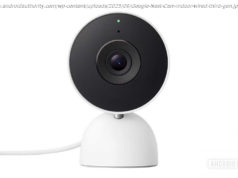The move could help Amazon stave off accusations of elitism
SAN FRANCISCO — Amazon is launching a program making its Prime service available at 50% off the monthly rate for people getting certain types of government assistance.
The new program gives Amazon the chance to expose a broader swath of Americans to the benefits of its Prime members, people who might become full-paying customers in time. Most recipients of government assistance spend fewer than four years getting such benefits, according to the U. S. Census. It also gives the Seattle-based company ammunition against accusations of elitism as it becomes an ever-larger part of American’s buying options.
It is available to Americans with a valid Electronic Benefit Transfer card, used to disburse funds for several government assistance programs including Temporary Assistance for Needy Families (TANF) , Supplemental Nutrition Assistance Program (SNAP) , and Women, Infants, and Children Nutrition Program (WIC) .
The new program allows eligible customers to get Amazon’s Prime membership for $5.99 a month, a savings of 46% off the normal $10.99 a month rate. For those paying yearly, it’s somewhat less of a bargain. The normal Amazon Prime yearly rate is $99, the program rate works out to $72 per year, a 29% savings.
Customers have the ability to cancel at any time.
Prime membership can be especially valuable to those living in areas without access to easy transportation or shopping because it offers unlimited free shipping on a broad array of items. In addition, membership makes free movies and TV shows available via Prime Video, free music via Prime Music, unlimited photo stores on Prime Photos and free e-books and magazines on Prime Reading.
It doesn’t make fresh food more available to people living in urban areas with no grocery or supermarkets. Amazon’s grocery delivery service, Amazon Fresh, requires an addition $14.99 a month fee and orders under $40 still require a $10 delivery fee.
But even with that limitation, some organizations advocating for low-income communities said Amazon was making a good first step.
“We welcome any move that eases the burden on struggling low-income families, » said National Urban League president and CEO Marc Morial. «The delivery component is particularly welcome because so many low-income families lack transportation, which further limits their shopping options.»
But technology could hold would-be users back. «One big barrier to taking advantage of this opportunity is a lack of broadband internet access in low-income communities, » he said. «I hope that Amazon and other companies will help in our efforts to see this disparity addressed.”
Amazon is also scheduled to become part of a test program later this year by the U. S. Department of Agriculture that will allow customers to use food stamps, now called the Supplemental Nutrition Assistance Program. That program is not linked to the lower Prime charge government benefit users.
As Amazon builds out its network of warehouses and makes same-day delivery more common, its footprint has come under increased scrutiny. Amazon was dinged last year for not providing free same-day shipping in many ZIP codes where residents were predominantly black, though it has since built out the delivery areas to include many of those previously excluded.
As the company becomes increasingly dominant in not just e-commerce but commerce in general, programs such as this can be a hedge against future claims that its prices and services are exclusionary.
«It’s not yet the case that Amazon will be criticized as a utility-like dominant provider of retail services, the way Walmart often is, but that day is not far off, » said James McQuivey, principal Amazon analyst with Forrester. «And with so much focus on the Echo devices and other sophisticated tools Amazon sells to higher-income homes, it’s important for the company to show that it’s not deliberately cutting out lower-income households, ” McQuivey said.






